 |
 |
 |
| |
Performance characteristics of HIV RNA screening with long-acting injectable cabotegravir (CAB-LA) pre-exposure prophylaxis (PrEP) in the multicenter global HIV Prevention Trials Network 083 (HPTN 083) Study
|
| |
| |
AIDS 2024 July 20-26 Munich
R. Landovitz*1,, F. Gao2,, J.M. Fogel3,, B. Hanscom4,, M. Clement5,, H.V. Tran6,, A.H. Gaur7,, C.J. Fichtenbaum8,, E. Piwowar-Manning3,, A. Moser3,, M.A. Marzinke3,, J. Mellors9,, E.K. Halvas9,, M. McCauley10,, K. Gomez-Feliciano10,, A. Jennings10,, L. Soto-Torres11,, S. Zwerski11,, J.F. Rooney12,, C. Acuipil13,, A.R. Rinehart14,, M.S. Cohen6,, B. Grinsztejn15,, S.H. Eshleman3,, For the HPTN 083 Study Team16,.
today in NEJM
Features of HIV Infection in the Context of Long-Acting Cabotegravir Preexposure Prophylaxis
Pdfs attached
Download the PDF Here
Download the PDF Here
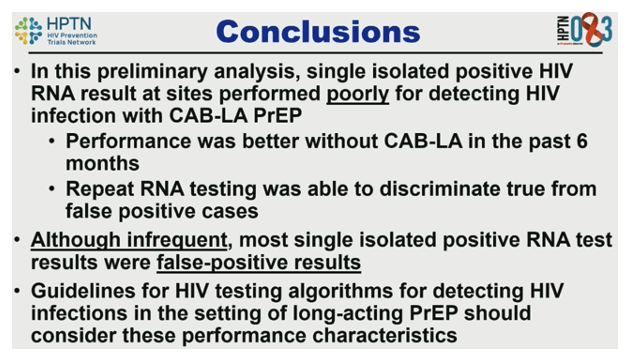
Abstract
BACKGROUND: Long-acting cabotegravir (CAB-LA) is highly effective for HIV pre-exposure prophylaxis (PrEP) but complicates detection of HIV infection. HIV RNA screening is the most sensitive method for detecting infections in persons using CAB-LA PrEP, usuallydetecting infections before integrase strand transfer inhibitor resistance emerges. We evaluated the performance HIV RNA screening in the HPTN 083 Open Label Extension study (OLE) among MSM/TGW.
METHODS: In the OLE, sites performed rapid testing, antigen/antibody (Ag/Ab) testing, and HIV RNA testing at every study visit. HIV status was determined based on-site testing and retrospective testing at a central laboratory. We calculated the positive predictive value (PPV) and false positive rate (FPR) of isolated positive RNA results and the sensitivity of RNA screening with other tests.
RESULTS: This analysis included 27,335 visits conducted for 2,620 participants through 11/30/23. Twenty-nine participants acquired HIV during the OLE. In 5/29 (17.2%), HIV infection was first identified by an isolated positive RNA test result (true positives, Table); in 2 of these cases, HIV infection was first identified at OLE enrollment. Twenty-three additional participants had an isolated positive RNA test result (22 HIV negative [false positives], 1 HIV status indeterminant). The PPV for detecting infection by RNA screening for participants with vs. without CAB-LA in the past 6 months was 9.1% (95% CI 1.6, 30.6) vs. 60% (95% CI 17, 92.7), respectively. The FPR and sensitivity for RNA screening for participants with vs. without CAB-LA in the past 6 months were: FPR: 0.08 (95% CI 0.05, 0.13) vs. 0.06 (95% CI 0.01, 0.24); sensitivity: 87.5% (95% CI 46.7, 99.3) vs. 100% (95% CI 80, 100), respectively.

CONCLUSIONS: HIV RNA screening performed poorly for detecting HIV infection during CAB-LA PrEP injections; performance was better immediately prior to CAB-LA initiation. Although infrequent, most isolated positive RNA test results while on CAB-LA were false-positive results. Guidelines for HIV testing algorithms designed to screen for long-acting PrEP failure should consider these performance characteristics.
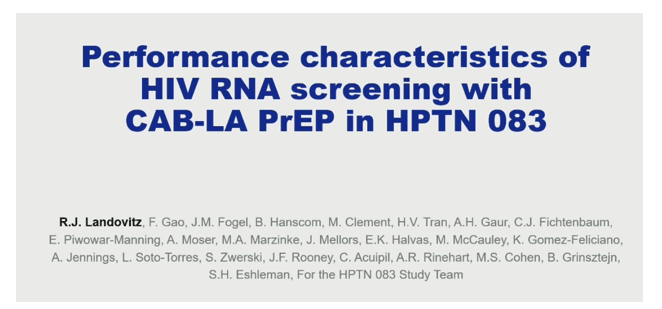
LEVI "Long-Acting Early Viral Inhibition" was1st described in HPTN 083 which LA PrEP agents delayed detection of new HIV infection when algorithms consisting of antigen-antibody or isolated antibody testing were used.
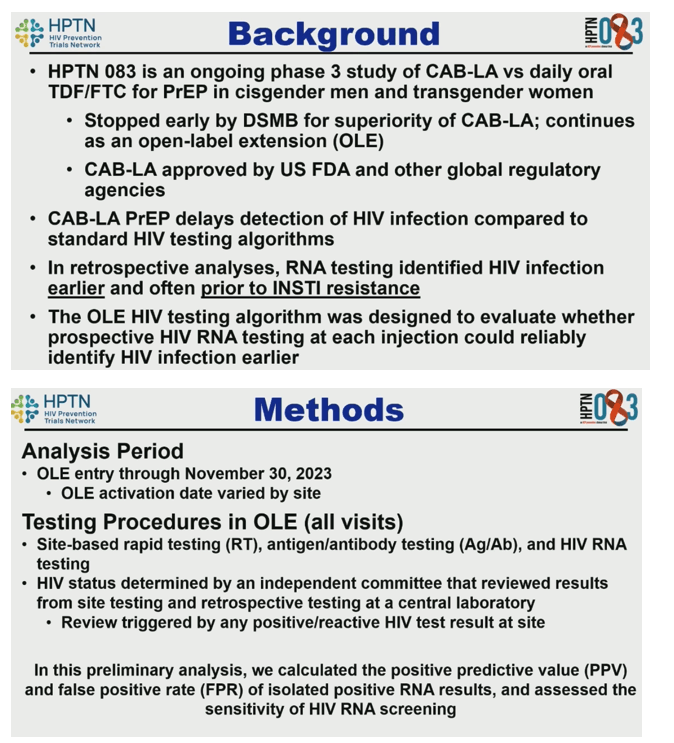
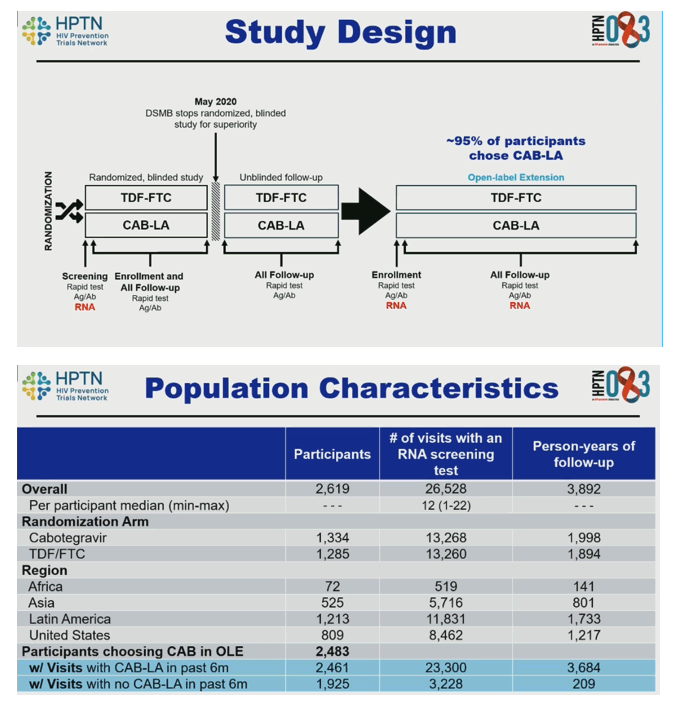
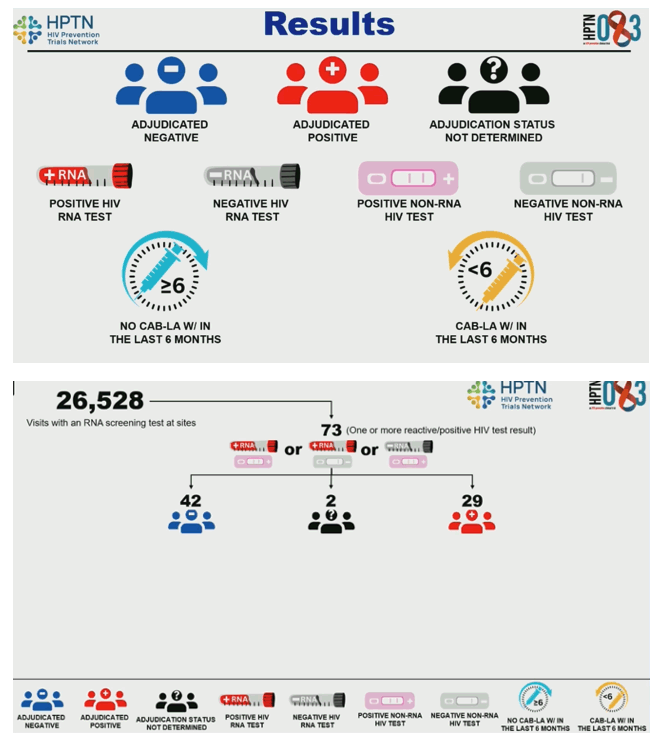
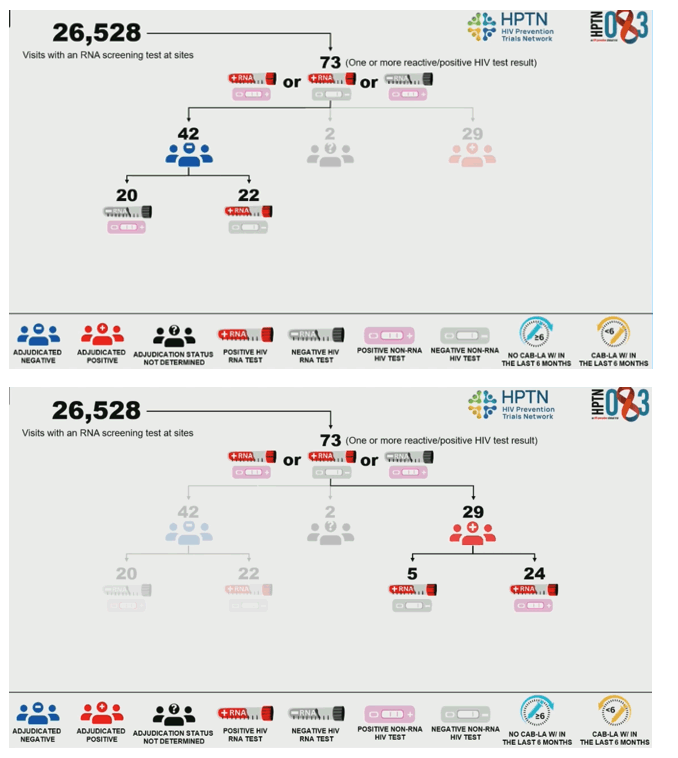
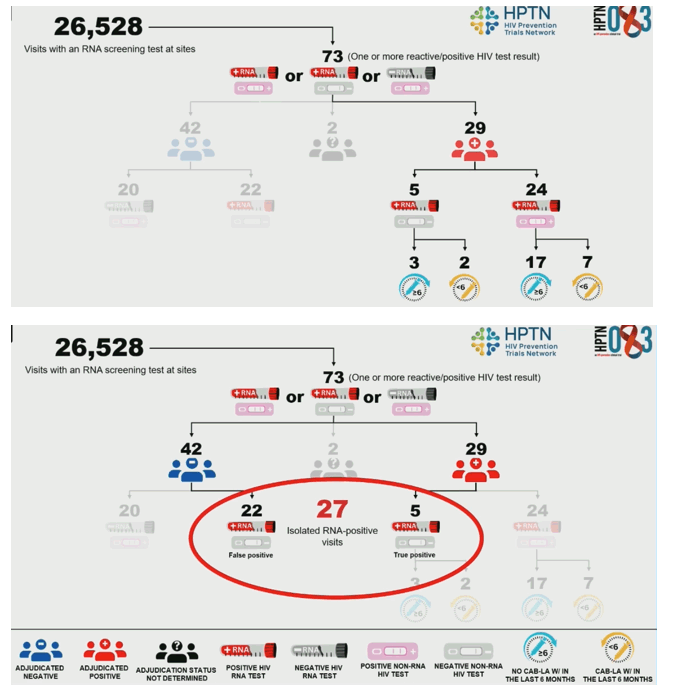
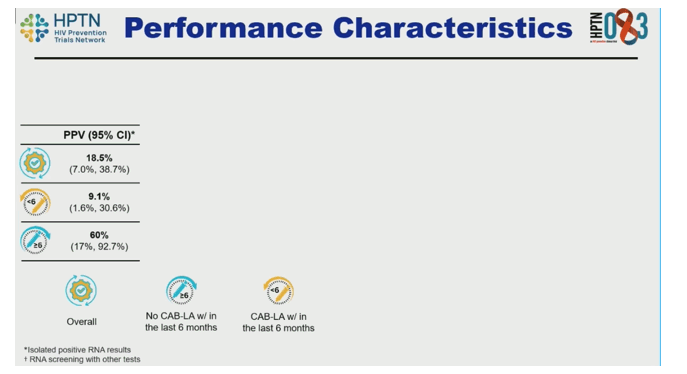
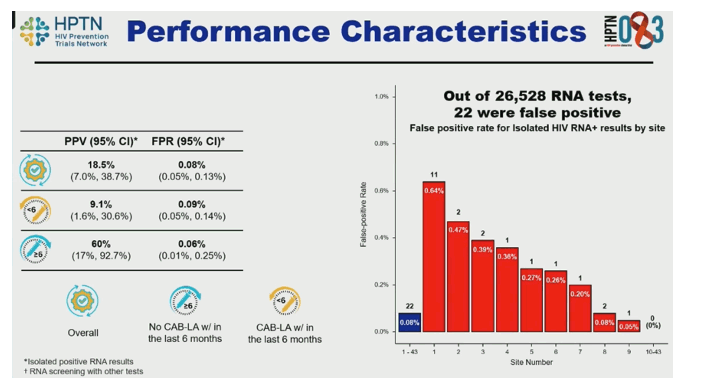
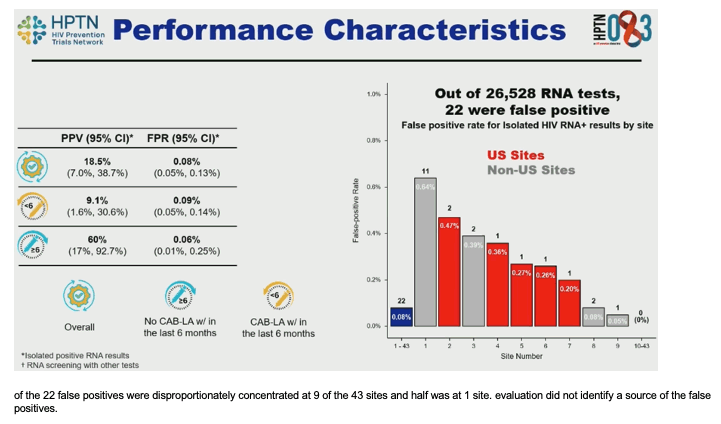
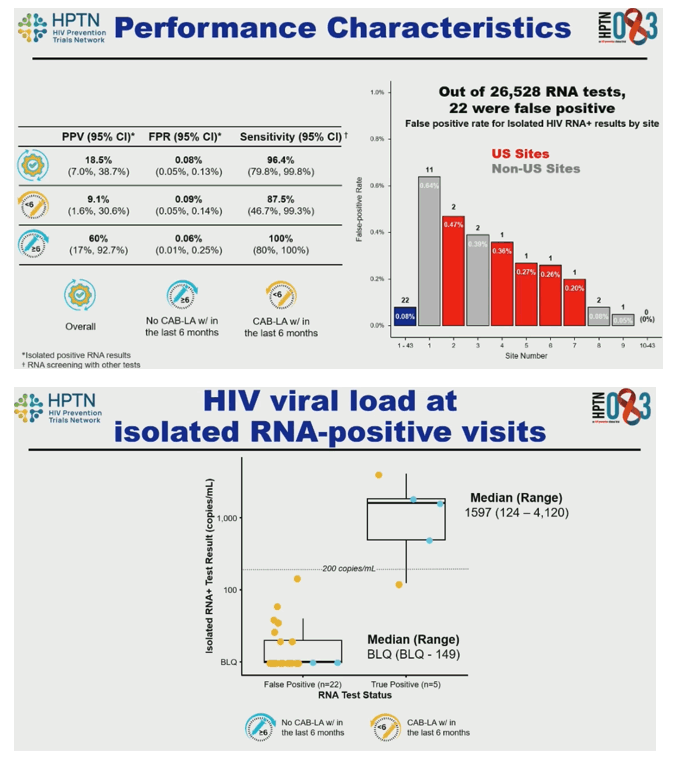
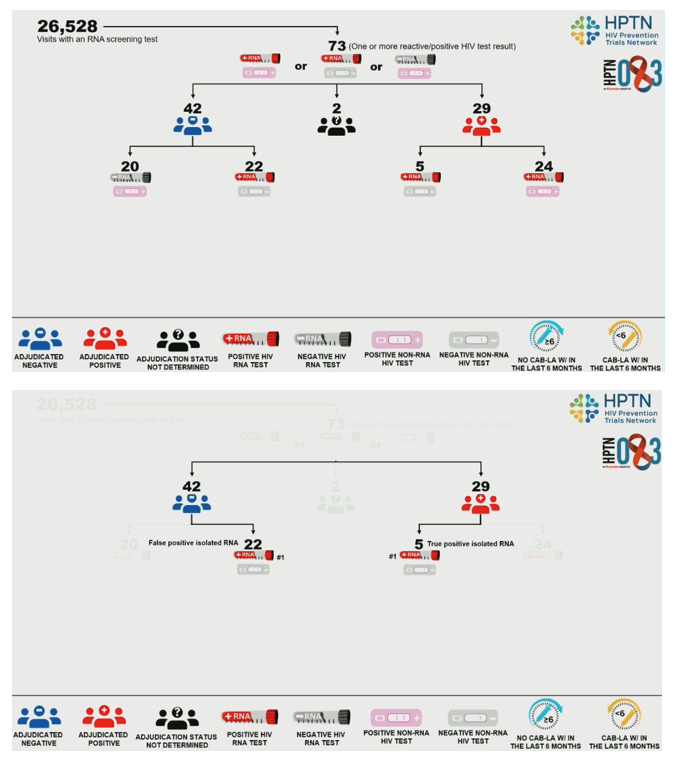
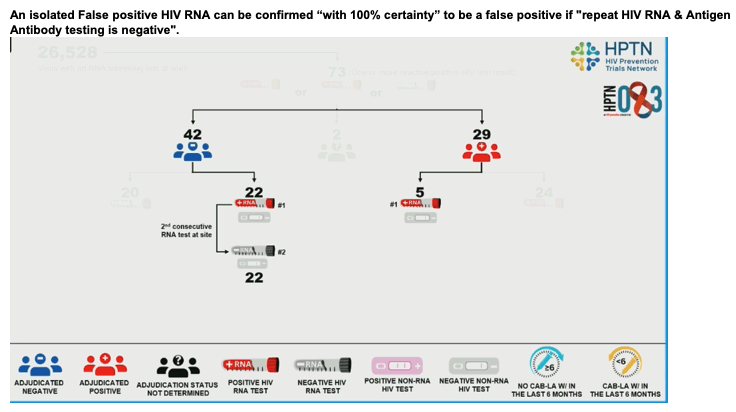
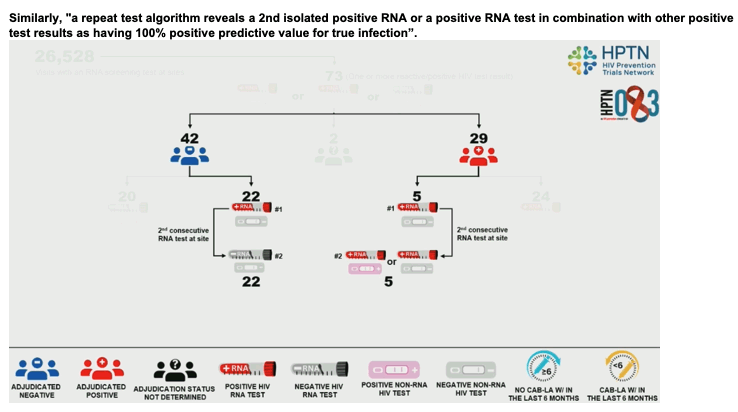
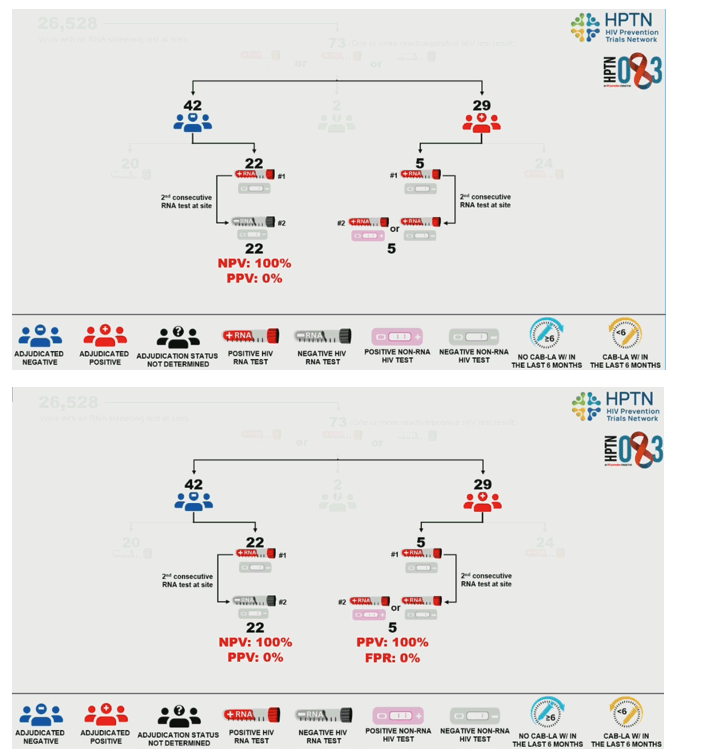

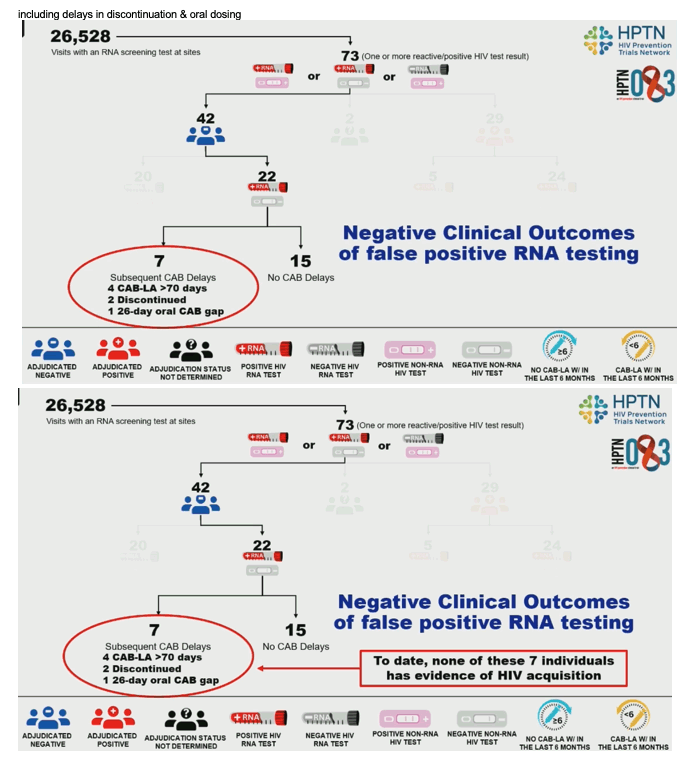
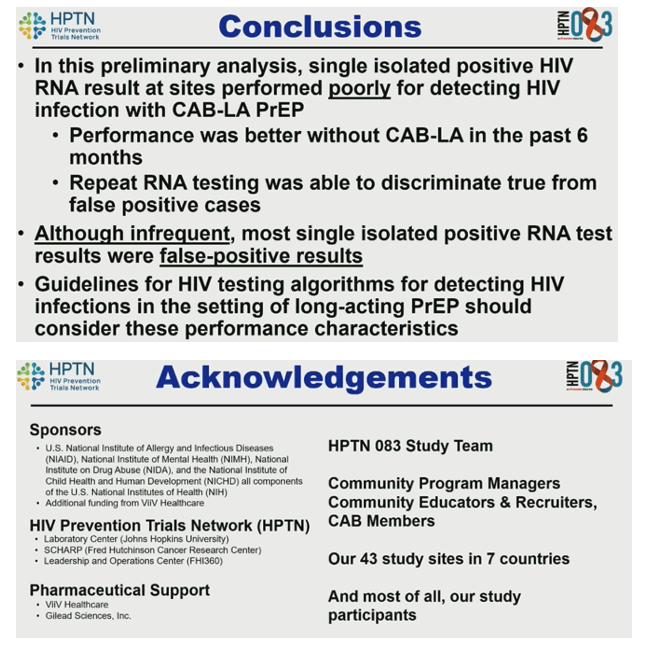
|
| |
|
 |
 |
|
|